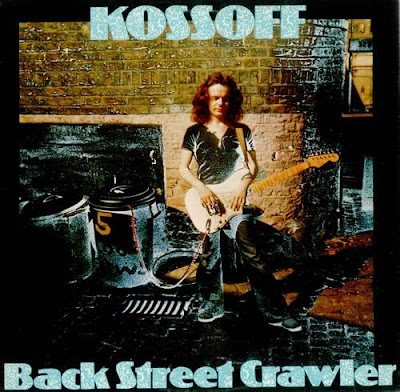Nihonjin - Far Out (1973) Full Album whit Bonus Tracks
The flow of psychedelic that happened in the latter half of the 1960's visits Japan at once and has extended. At that time, the power to involve demonstrated the power of the counterplan enough as cultures such as music and the arts and plays. An original custom of Japan and the thought of the Orient exactly appeared enough to the music of psychedelic in Japan. Or, the deriving music exhausted the musician in various Japan as one flow. A lot of bands in Japan influenced by the music of the United States and Britain for the situation of Japanese music at that time existed and the band in known Japan existed as a result of digesting those elements also in the world now. Members of the band in various Japan created original music in the one flow while studying hard mutually valuing the flow. And, it was one band to which this "Far Out" had started also establishing an original route in the flow of such music.
It was at 1971 that they were formed. It is said that they were performing music that exactly receives the influence of Hard Rock at that time and makes Rock a center. However, the music character has been improved while gradually taking the element of psychedelic. The band in a lot of Japan made original music of Japan absorb the music such as psychedelic, Blues, and Rock and created without limiting the activity such as bands of Pink Floyd, Black Sabbath, and psychedelic of the other to the band in Japan and influencing and limiting it to them.
In the back, this band to which Fumio Miya[&*!#]a is mainly formed will change the form into "Far East Family Band". It is known as a band of the antecedent to the arrival there. However, the listener who knew this band became in the minority also in Japan now. However, it is likely to be able to count as one of the bands that support the dawn of the music of Japan very important band.
Involved power and flow of "Too Many People" create one space. The culture and the thought of the Orient in Japan might be reflected well though it looks like the sound of initial Pink Floyd and King Crimson. The progress of the sound of the float in the space exactly feels the sound of psychedelic and a few Blues. The guitar of Eiichi Sayu will exactly invite the listener to the world of psychedelic.
"Nihonjin" can be translated into "Japanese". The entire flow of the album is united. The culture and the thought of the Orient are reflected in music as for this tune. It advances with quiet power and progress.
In Japan at that time, such a lot of bands existed. If the situation of music the meaning of the existence of this band and at that time is considered, it is likely to be able to enjoy it as one of the bands to which Japan is psychedelically related though this band certainly becomes a mother's body and it connected with Far East Family Band.
Review by Kazuhiro from Prog Archives.
http://www.progarchives.com/album.asp...
Songs / Tracks Listing
1. Too Many People (0:00)
2. Nihonjin (18:00)
Bonus Tracks
3. Birds Flying To The Cave (37:54)
4. Saying To The Land (42:31)
5. Moving, Looking, Trying, Jumping (51:00)
6. Wa Wa (52:35)
7. The Cave Down To The Earth (55:30)
8. Four Minds (1:01:54)
9. Transmigration (1:07:52)
Line-up / Musicians
- Fumio Miyashita / vocal, nihonbue, acoustic guitar, harmonica, moog (custom)
- Eiichi Sayu / lead guitar, hammond organ, chorus
- Kei Ishikawa / vocal, bass guitar, electric sitar
- Manami Arai / drums, nihon-daiko, chorus



































